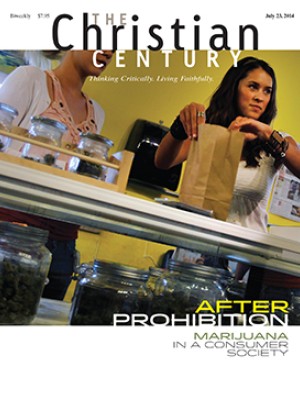Interfaith civic groups find ‘bridging prayers’ helpful
Just because interfaith, interracial, and varied ethnic groups share a common cause doesn’t mean a diverse coalition can hang together.
It often takes prayer. And not just a “Bless this group, Amen” invocation.
A new study by three sociologists finds that three out of four interfaith civic coalitions turn to what the sociologists have dubbed “bridging prayer”— interactive, participatory, and often innovative prayers and rituals that highlight their shared identity as people of faith.
“Shared issues alone don’t necessarily ensure cooperation,” said Ruth Braunstein, assistant professor of sociology at the University of Connecticut. “But groups that cannot build a shared culture could find it very difficult to succeed.”
Read our latest issue or browse back issues.
Bridging prayers “build internal strength and give groups moral authority in the greater community,” said Braunstein, coauthor of the study published in late June by the online edition of American Sociological Review.
Duke University researcher Brad R. Fulton, another coauthor, said the sociologists looked at 200 national civic coalitions to see how they stay glued together “rather than fragmenting and falling apart.”
“For all the talk about diversity, there hasn’t been much study of how groups navigate diversity,” he said.
According to the study, the researchers looked at complex groups such as “when Haitians from a Catholic church, Arab-Americans from a Muslim organization, and Latinos from a Lutheran congregation work together to address issues facing immigrants in their community.”
Homogenous groups also prayed, said Fulton, although the need for practices that bridge differences was not seen as essential. These prayers were more like quick invocations delivered by one person before the group got down to the business of the day.
Most diverse groups, however, turned to participatory prayers, innovative blessings, and teaching moments about each other’s beliefs. The intent is to create a sense of commonality before moving forward on civic or secular issues, Fulton said.
The study mentioned some ways that prayers became bridges across differences. For example, when one city’s Interfaith General Assembly held its annual gathering of the entire coalition, an Italian-American Catholic priest called everyone to prayer saying, “If you are Jewish, stand for Adonai. If you are Muslim, stand for Allah. If you are Christian like me, stand for Jesus.”
Other groups adapted religious and nonreligious texts such as news articles, poetry, and social criticism to create prayers or teaching sessions.
The study did not establish whether these groups lasted longer or were more successful. The researchers also acknowledge that other practices could be equally effective—sharing meals, singing, playing music or dancing, or any other practices that “highlight and celebrate commonality.”
By whatever bridge they construct, Fulton said, “groups that engage their differences are able to reap the benefits of diversity in their reach and effectiveness.” —RNS
This article was edited July 10, 2014.





